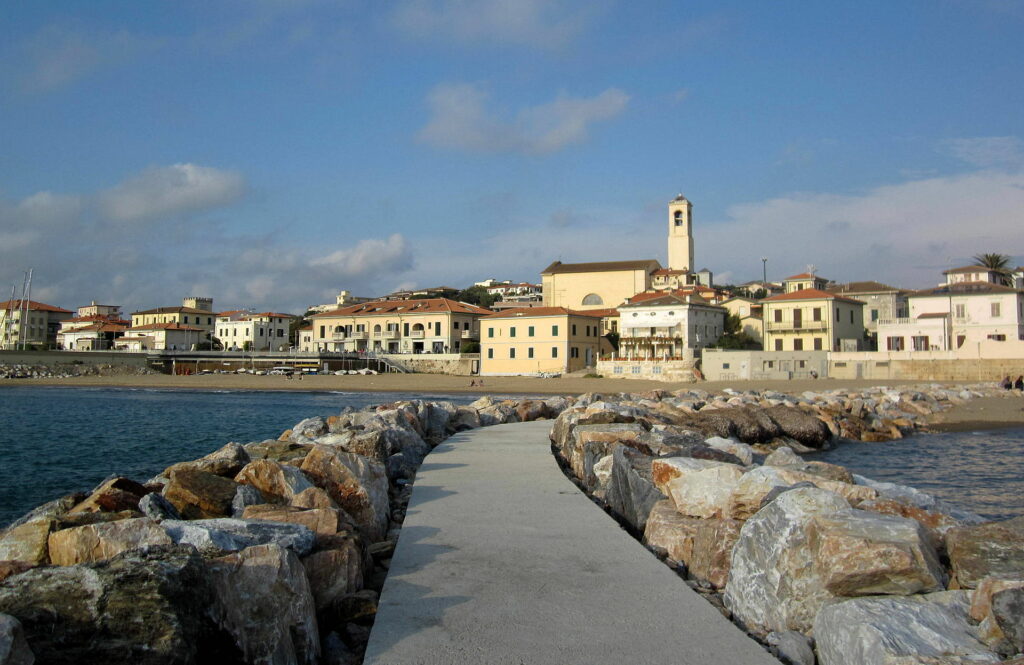22 May San Vincenzo

San Vincenzo is located on the Ligurian Sea, in the stretch of coast south of Livorno, which is called the Etruscan Coast and extends from the capital to Piombino.
Located in the Livorno Maremma, or the historic Pisan Maremma, it is bounded to the north by the municipality of Castagneto Carducci and to the south by the Rimigliano Coastal Park and the municipality of Piombino. In its hinterland lies the Val di Cornia.
History
From antiquity to the Unification of Italy
Ancient studies have found that San Vincenzo was inhabited since ancient times; in fact, the first traces of human presence date back to the Paleolithic period, this favored by the location between the Metalliferous Hills and the rivers Cecina and Cornia.
The place name is first attested in 1285 as Torre di San Vincenzo, named after a coastal tower built by the Pisans, which still exists today and is owned by the municipality. The tower was part of a series of coastal fortifications and lookouts located throughout the territory, built in order to protect these places from Saracen attacks. It seems that this tower was in turn named after a church dedicated to St. Vincent located nearby.
The strategic position of the town did not escape the Etruscans, who populated it intensively, both because of its proximity to Populonia, known at that time as Lucumonia, and because of the presence of minerals and large forests.Between the 9th century B.C. and the 5th century B.C., it was in fact the focus of intense mining activity.
Later, it was conquered by the Romans, who ran the Via Aurelia through it, and most likely built a village and landing place there.
The Lombards new lords of Tuscany built, on an imposing hill, the Castle of Biserno (near the present quarries of San Carlo) under the ownership of a branch of the Della Gherardesca family.
The construction of the Coastal Tower was the work as mentioned above of the Republic of Pisa, this construction, initiated the formation of the first inhabited agglomeration of fishermen. In 1304 the castle of Biserno was partially destroyed due to power disputes within the Pisan della Gherardesca family.
Full Article (in Italian) on: wikipedia.org

